Intro
Learn the 5 crucial heart attack warning signs, including chest pain, shortness of breath, and fatigue, to recognize cardiac arrest symptoms and take prompt action, preventing cardiovascular disease and promoting heart health.
Heart attacks are a leading cause of death worldwide, and recognizing the warning signs is crucial for prompt medical attention and improved survival rates. A heart attack, also known as myocardial infarction, occurs when the blood flow to the heart is severely blocked, causing damage to the heart muscle. The importance of understanding heart attack warning signs cannot be overstated, as it can mean the difference between life and death. In this article, we will delve into the critical warning signs of a heart attack, exploring the symptoms, risks, and preventive measures that can help save lives.
The warning signs of a heart attack can vary from person to person, and it's essential to be aware of the common symptoms to seek medical help promptly. Heart attacks can occur suddenly, without any prior warning, or they can be preceded by warning signs that may be mild or severe. The American Heart Association emphasizes the importance of recognizing the warning signs of a heart attack, as timely medical intervention can significantly improve outcomes. By understanding the risks and symptoms associated with heart attacks, individuals can take proactive steps to reduce their risk and respond appropriately in emergency situations.
Heart health is a critical aspect of overall well-being, and being informed about heart attack warning signs is a vital step in maintaining a healthy heart. The consequences of ignoring heart attack warning signs can be devastating, resulting in permanent damage to the heart muscle, reduced quality of life, or even death. Therefore, it's crucial to prioritize heart health, recognize the warning signs of a heart attack, and take immediate action if symptoms persist or worsen over time. By doing so, individuals can reduce their risk of heart attack, improve their overall health, and increase their chances of survival if a heart attack occurs.
Introduction to Heart Attack Warning Signs
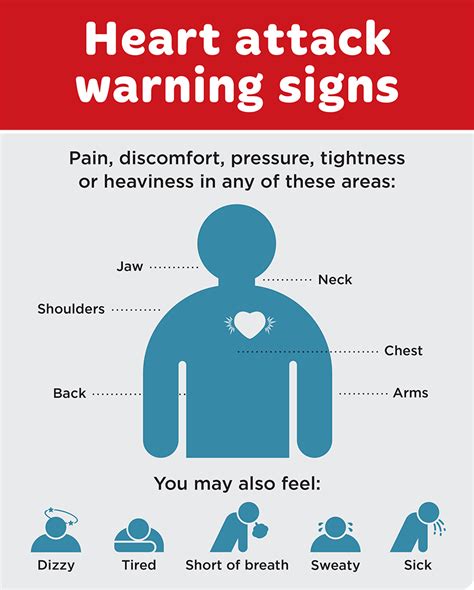
Common Heart Attack Warning Signs
The warning signs of a heart attack can be divided into two categories: typical and atypical. Typical symptoms include chest pain or discomfort, shortness of breath, and pain or discomfort in the arms, back, neck, jaw, or stomach. Atypical symptoms, on the other hand, may include nausea, vomiting, or fatigue. It's crucial to recognize that heart attacks can occur without any prior warning, and the symptoms may be mild or severe. The American Heart Association recommends the "FAST" method to recognize the warning signs of a heart attack: Face drooping, Arm weakness, Speech difficulty, and Time to call for emergency medical services.Understanding the Risks of Heart Attack
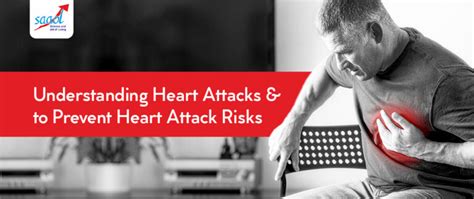
Managing Heart Attack Risk Factors
Managing heart attack risk factors requires a comprehensive approach that incorporates lifestyle modifications and medical interventions. This may include monitoring blood pressure and cholesterol levels, maintaining a healthy weight, engaging in regular physical activity, and managing stress. Additionally, individuals with a family history of heart disease or other risk factors may need to work with their healthcare provider to develop a personalized plan to reduce their risk. By taking proactive steps to manage risk factors, individuals can significantly reduce their likelihood of experiencing a heart attack.Recognizing the Warning Signs of a Heart Attack in Women
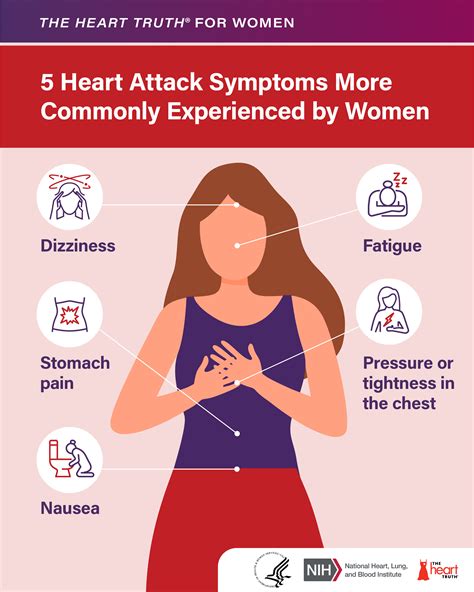
Unique Heart Attack Warning Signs in Women
The unique warning signs of a heart attack in women include shortness of breath, nausea, vomiting, fatigue, and pain or discomfort in the arms, back, neck, jaw, or stomach. These symptoms can be accompanied by other signs, such as lightheadedness or dizziness, cold sweats, or a feeling of impending doom. It's crucial for women to recognize these symptoms and seek medical help immediately, as timely intervention can significantly improve outcomes. By being aware of these unique warning signs, women can take proactive steps to reduce their risk of heart attack and improve their overall heart health.Preventing Heart Attacks through Lifestyle Modifications
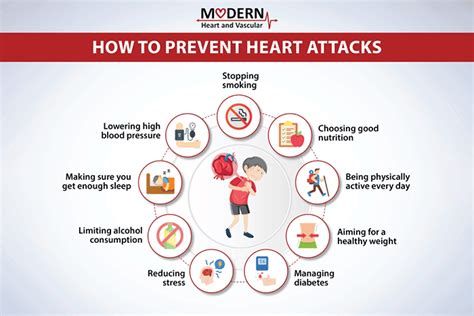
Lifestyle Modifications for Heart Health
Lifestyle modifications play a critical role in preventing heart attacks. This may include: * Eating a healthy diet that is low in saturated and trans fats, added sugars, and sodium * Engaging in regular physical activity, such as brisk walking, cycling, or swimming * Managing stress through techniques such as meditation, yoga, or deep breathing exercises * Avoiding smoking and limiting alcohol consumption * Getting enough sleep and maintaining a healthy weight By incorporating these lifestyle modifications into daily life, individuals can significantly reduce their risk of heart attack and improve their overall heart health.Responding to a Heart Attack Emergency
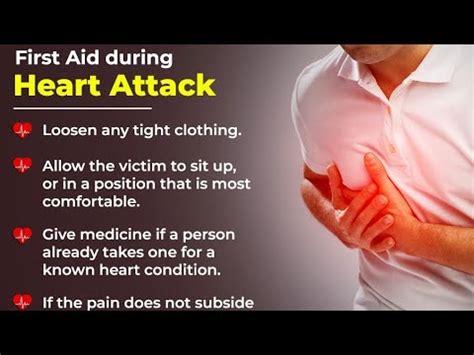
Emergency Response Tips
Emergency response tips for a heart attack include: * Calling emergency medical services immediately if symptoms occur * Remaining calm and trying to relax while waiting for help to arrive * Sitting or lying down in a comfortable position to reduce strain on the heart * Avoiding driving or operating heavy machinery if symptoms occur * Administering CPR if the person is unconscious, not breathing, or not responsive By following these emergency response tips, individuals can help save lives and reduce the risk of long-term damage to the heart.What are the most common warning signs of a heart attack?
+The most common warning signs of a heart attack include chest pain or discomfort, shortness of breath, lightheadedness or dizziness, pain or discomfort in the arms, back, neck, jaw, or stomach, and cold sweats.
How can I reduce my risk of heart attack?
+You can reduce your risk of heart attack by maintaining a healthy diet, engaging in regular physical activity, managing stress, avoiding smoking, and getting enough sleep.
What should I do if someone experiences symptoms of a heart attack?
+If someone experiences symptoms of a heart attack, call emergency medical services immediately and try to remain calm. While waiting for help to arrive, the person should sit or lie down in a comfortable position and try to relax.
In conclusion, recognizing the warning signs of a heart attack is crucial for prompt medical attention and improved survival rates. By understanding the risks and symptoms associated with heart attacks, individuals can take proactive steps to reduce their risk and respond appropriately in emergency situations. We encourage readers to share this article with friends and family, and to take the necessary steps to prioritize their heart health. By working together, we can reduce the incidence of heart attacks and improve overall health and well-being. If you have any questions or concerns about heart attack warning signs, please don't hesitate to comment below or consult with a healthcare professional.
